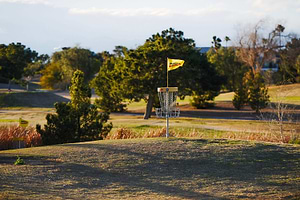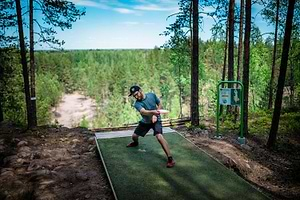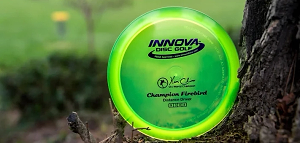Disc Golf Numbers: What They Mean And How to Apply Them
TOC
Table of Contents
Disc golf numbers (or ratings) show how a disc is designed to fly. Each disc is given a numeric rating from four flight categories: Speed, Glide, Turn, and Fade. This system, which allows for disc comparison and for players to preview discs before throwing them, is essential to gaining a deeper understanding of disc flight. This article provides a thorough explanation of each flight number so that you’ll be able to stop ignoring them and start putting them to use.
**This article focuses on Innova’s flight rating system, but since flight numbers are commonly used in the disc industry, our explanation of each flight number can generally be applied to any golf disc.
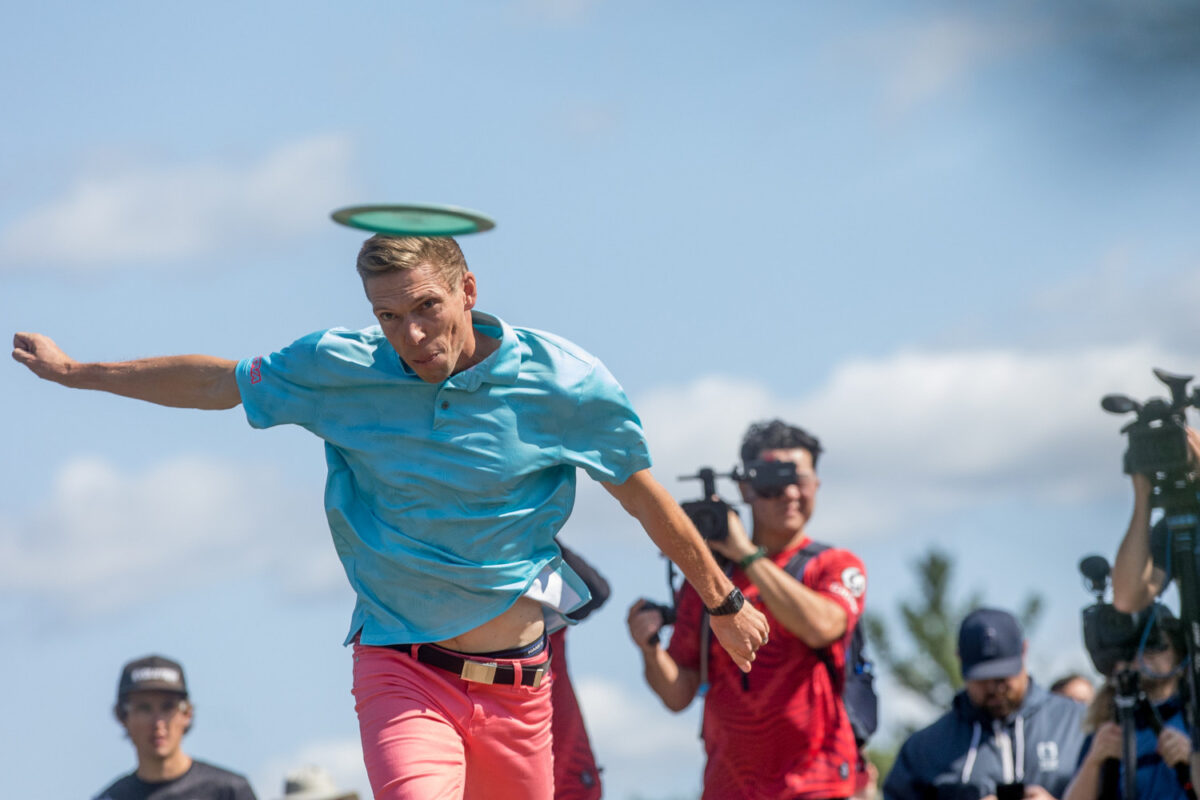
What are the Four disc golf flight numbers?
Obviously, the best way to understand how a disc flies is to throw it along with a pile of other discs and see how they all stack up. But, that’s expensive and you might ruin the laundry bag needed to carry them all. So, to help us all out, Innova Disc Golf Co-Founder and Disc Inventor Dave Dunipace came up with the four flight numbers to better classify Innova discs. Dave’s flight rating idea worked. In fact, it worked so well it has essentially become a numeric disc golf language to describe how discs fly. So, let’s dive right in to the first flight number.
The Speed Rating (The First Number)
Sometimes when you’re dealing with numbers it helps to give them a little personality. It makes them easier to get to know. When it comes to Speed, we like to think of it as the group leader. It gets things going. It’s the one the whole group depends on to stay active.
Speed determines disc type
If you want a more scientific explanation, Speed is how fast a disc travels through the air. And Innova discs are rated from a scale from 1 (very slow) to 14 (super fast). Speed is quite important for a number of reasons, but let’s start with this one: it determines what kind of disc it is. Depending on the disc’s Speed it’s either a:
- Putt & Approach disc = Speed 1 – 3
- Mid Range disc = Speed 4 – 5.5
- Fairway Driver disc = Speed 6 – 8
- Distance Driver disc = Speed 9 – 14
Discs are made differently to achieve a certain Speed. The slowest discs like putters tend to have a thinner, more rounded rim. As you move up in Speed, the disc rim gets gradually bigger to the point where the fastest distance drivers have a pretty fat rim. Essentially, the faster the disc, the wider the rim.
Speed also key in determining distance
There are several other factors involved in distance like Glide (coming up next), but basically: the faster the disc, the further it goes. Take a look at the graphic below with the flight path of a putter (Aviar), a midrange (Roc), a fairway driver (TeeBird), and a distance driver (Shryke). The Speed rating of each disc is noted as well. Obviously, these results won’t happen for everyone, but the graphic is meant to give you a basic idea of how Speed can affect a throw for the average disc golfer. And in most cases more Speed = more distance.
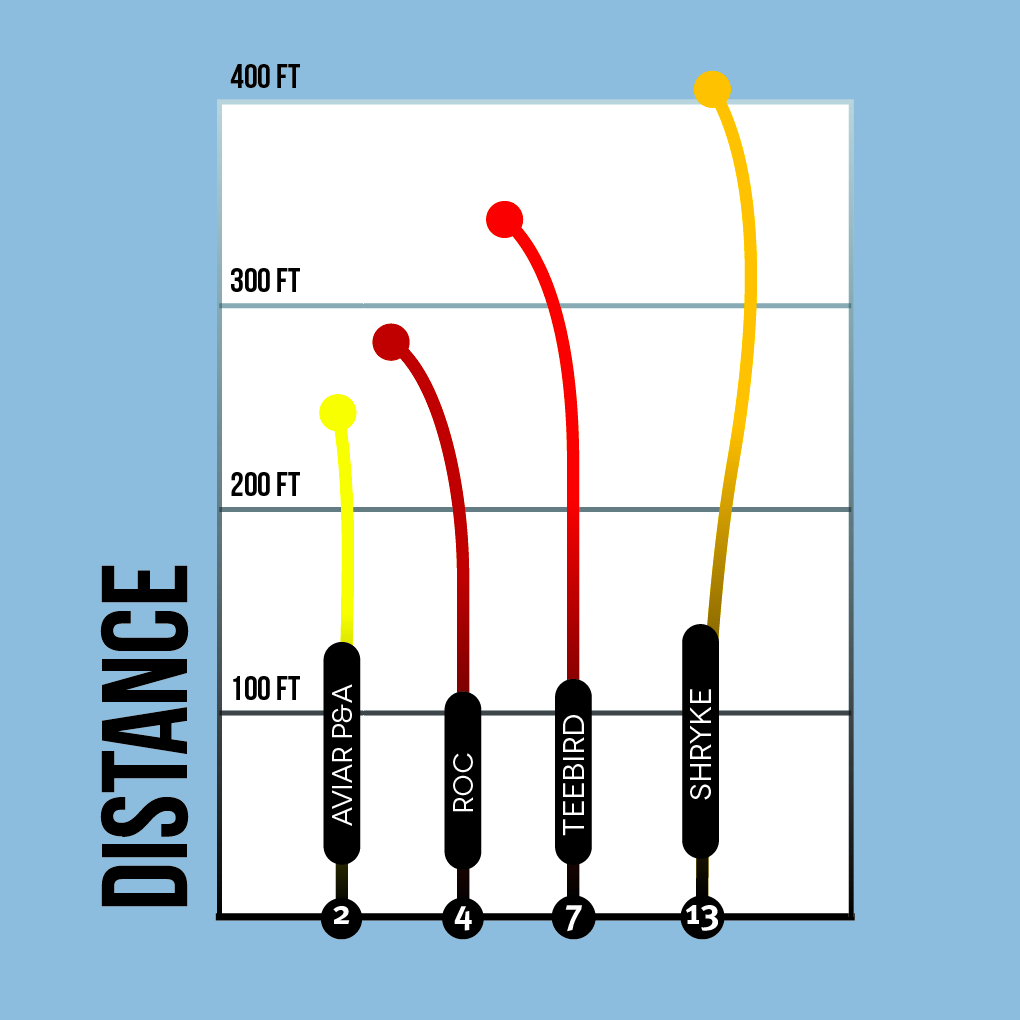
The fast lane’s not for everyone
Of course, there are some exceptions. Some people will throw a fairway driver further than a distance driver. Others swear a mid range is their furthest disc. This often has to do with a player’s form and how much power or arm Speed they can generate. As you can guess, it takes significant arm Speed to throw a 13 or 14 Speed distance driver as designed. If you can’t get the disc up to Speed, the Fade (which we’ll talk about later) is amplified, making the disc crash sooner to the ground. Plus, extremely fast discs can be a bit squirrelly (Ever seen a squirrel cross a street? Yeah, kinda like that) if they’re not released precisely.
Five-time World Champion Juliana Korver says that players should proceed with caution when it comes to super fast discs. “Players may be tempted to throw the fastest disc available in an attempt to get maximum distance, but the two do not always correlate. For one, any mistakes with angle of release or direction are amplified far more greatly with faster discs than they are with slower discs,” said Korver.
***Beginner Tip *** This is why beginners are often urged to throw discs that are Speed 8 or less as they’re learning disc control. You wouldn’t give a 16-year-old a Lamborghini, right? Heck you may not even want to give 16-year-old a beater truck either.
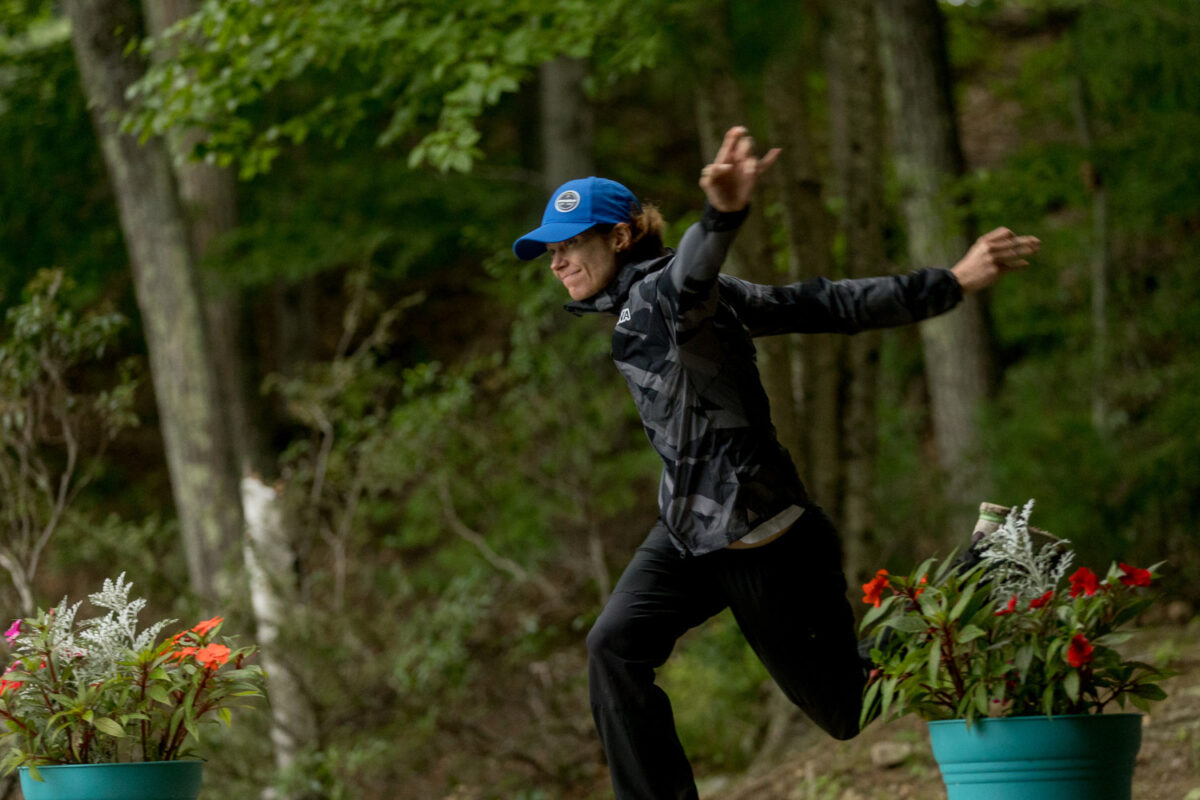
Here’s a sampling of discs w/ different Speed:
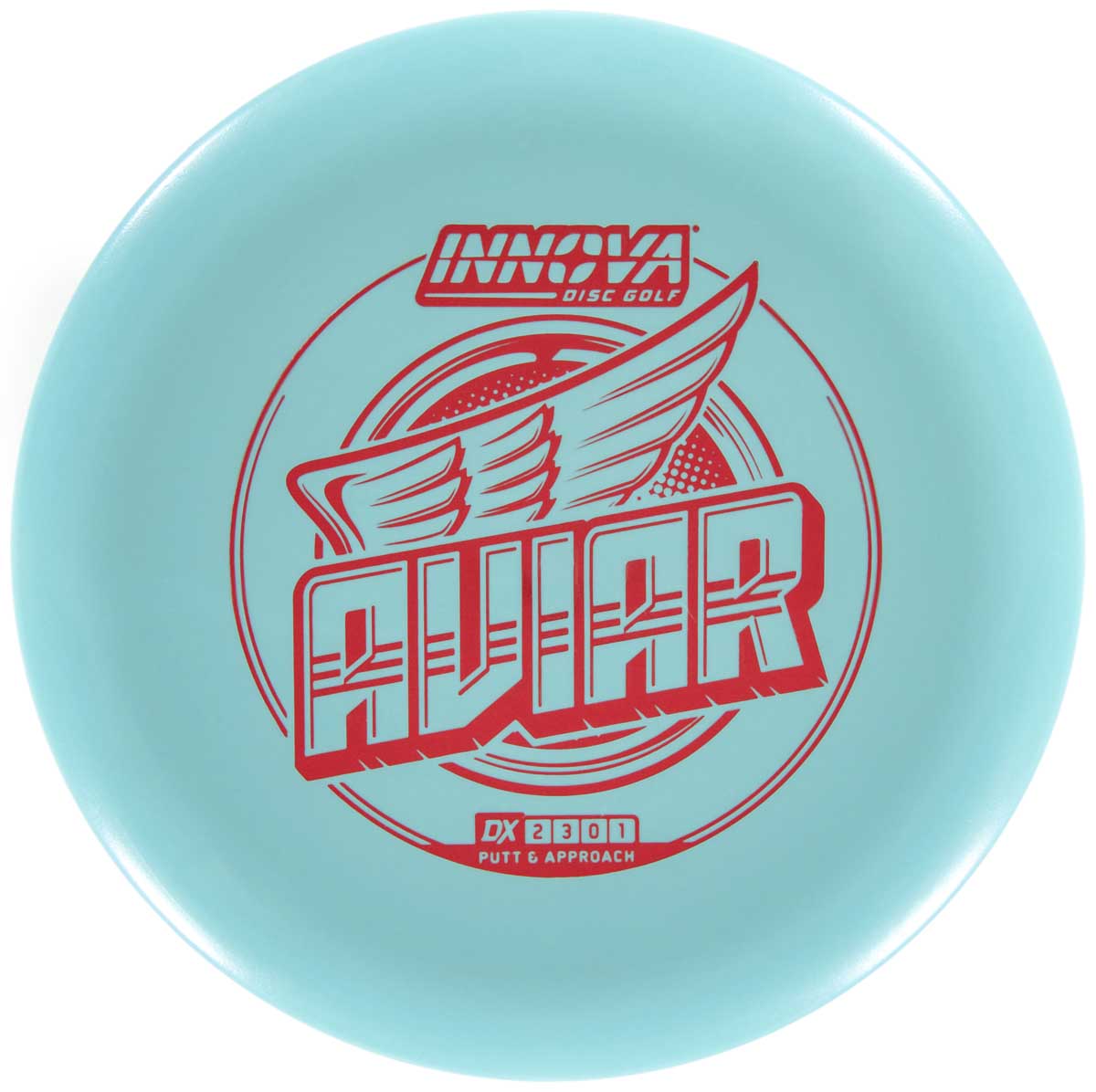
Putt & Approach: Aviar (2 Speed). The slowest discs are the most accurate from short distances. That’s the case with the Aviar, which is great for on-target putting and short approaches to the green. Great starter disc.
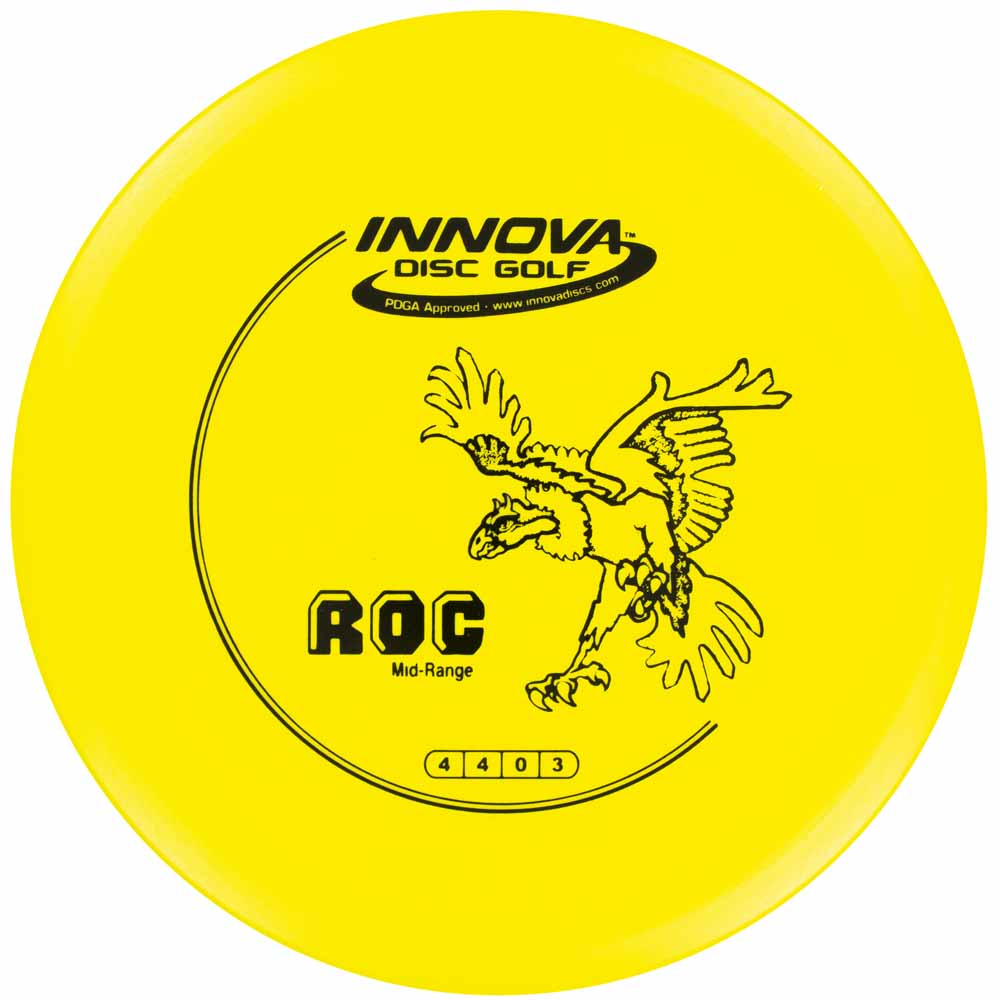
Midrange: Roc (4 Speed). Versatile large diameter disc that can do it all. Slower midranges like the Roc are often chosen when accuracy is crucial because they’re so easy to handle.
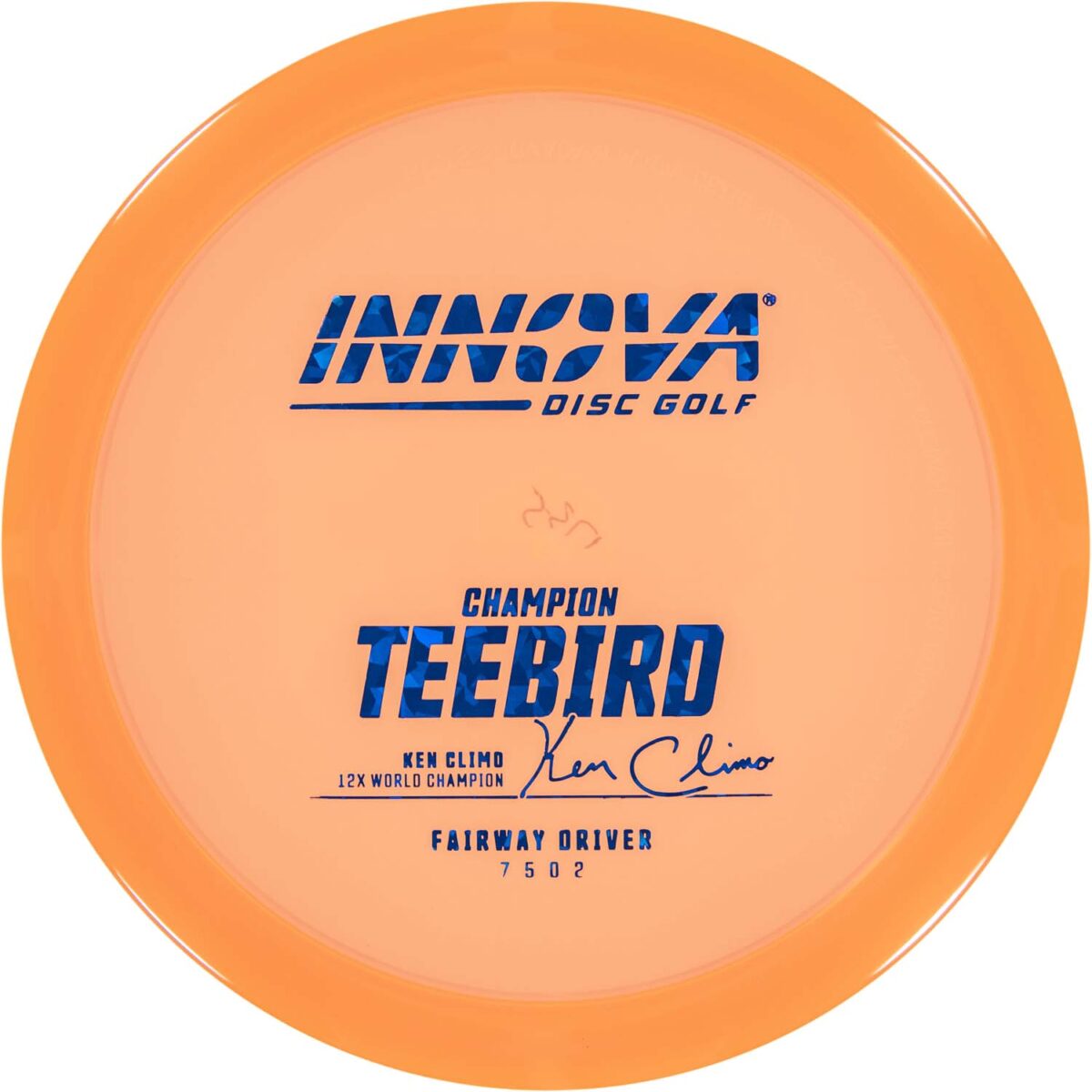
Fairway Driver: TeeBird (7 Speed). Stretch out your precision with these reliable discs. You’re not gonna break any distance records, but you’ll land in the short stuff more often.
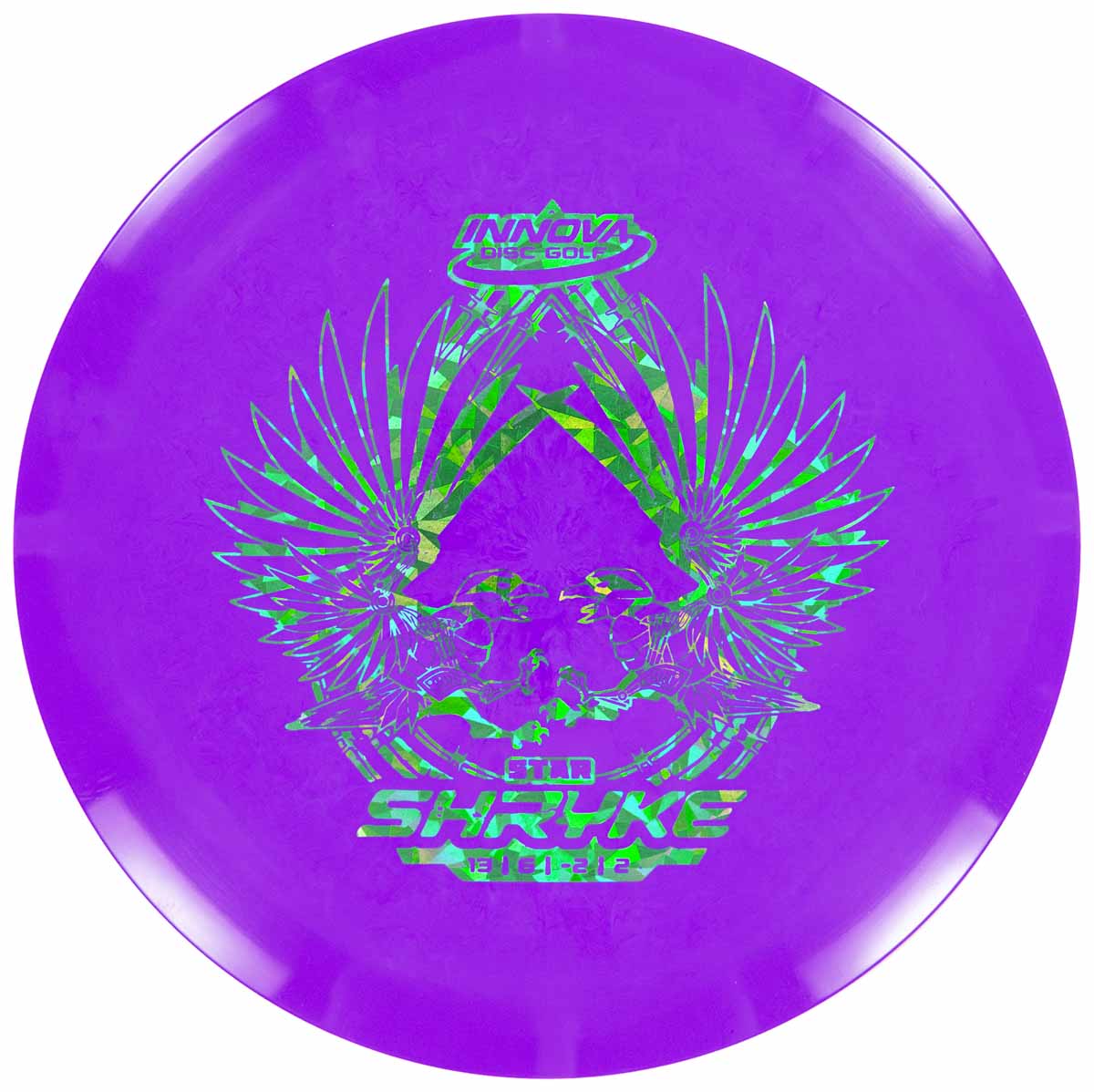
Distance Driver: Shryke (13 Speed). This is a super fast max distance driver that will allow you to reach greens you haven’t in the past. However, very speedy discs, like fast cars can be tricky to control.
The Glide Rating (The Second Number)
Gliding is fun. It means taking your foot off the gas and seeing where the laws of nature take you. Think of hang gliders, parachutes, even our friend the sugar glider seems to be having a ball. And that rings true for disc golf, too. We all love to see our disc fly and Glide makes the experience last a bit longer.
The technical disc golf definition for Glide is how naturally the disc will maintain loft while in the air when thrown correctly. Its range is between 1 and 7, with 1 being very little Glide to 7 being, will it ever stop? 2023 US Masters Champ Philo Brathwaite says Glide is THE key factor in disc flight. “How much Glide or the lack there of plays a huge part in the shape of the flight and the amount of effort to propel the disc,” said Brathwaite.
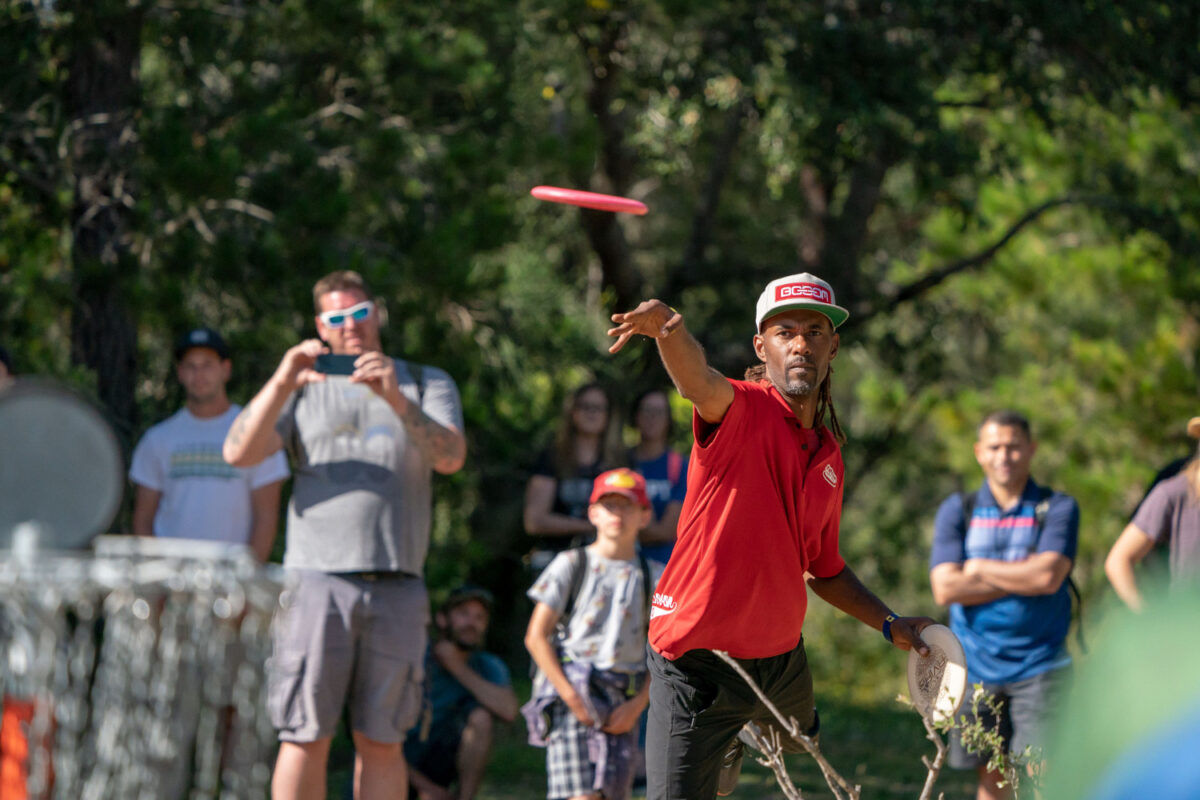
Discs with a high Glide rating (4+) will have that extra push we sometimes need to hit a deep landing zone or get within putting range. They’re also pleasing to watch operate. Ever seen a Wombat3 hit that perfect anhyzer line? We have and it’s a work of art. High Glide paired with a high-Speed disc can often result in huge distance. Short range discs like putters, can make use of glide, too. “When putting, most players are trying to Glide the disc toward the chains,” said Brathwaite. That’s because there’s “less side-to-side movement and the disc stays on line with the chains longer,” he added.
***Beginner Tip*** Higher Glide is usually better for newer players. It keeps the disc in the air longer without a ton of effort.
For when floating’s not cool: Lower glide discs are also valuable, especially for approach shots when you don’t want to overshoot your target. The popular Pig has the lowest Glide among midrange discs at 1. As a power backhand and forehand approach disc, low Glide works in its favor, providing accurate lines that stop on cue and a snort of approval from you. High Glide can also get unpredictable in high winds.
Here’s a sampling of discs w/ different Glide:
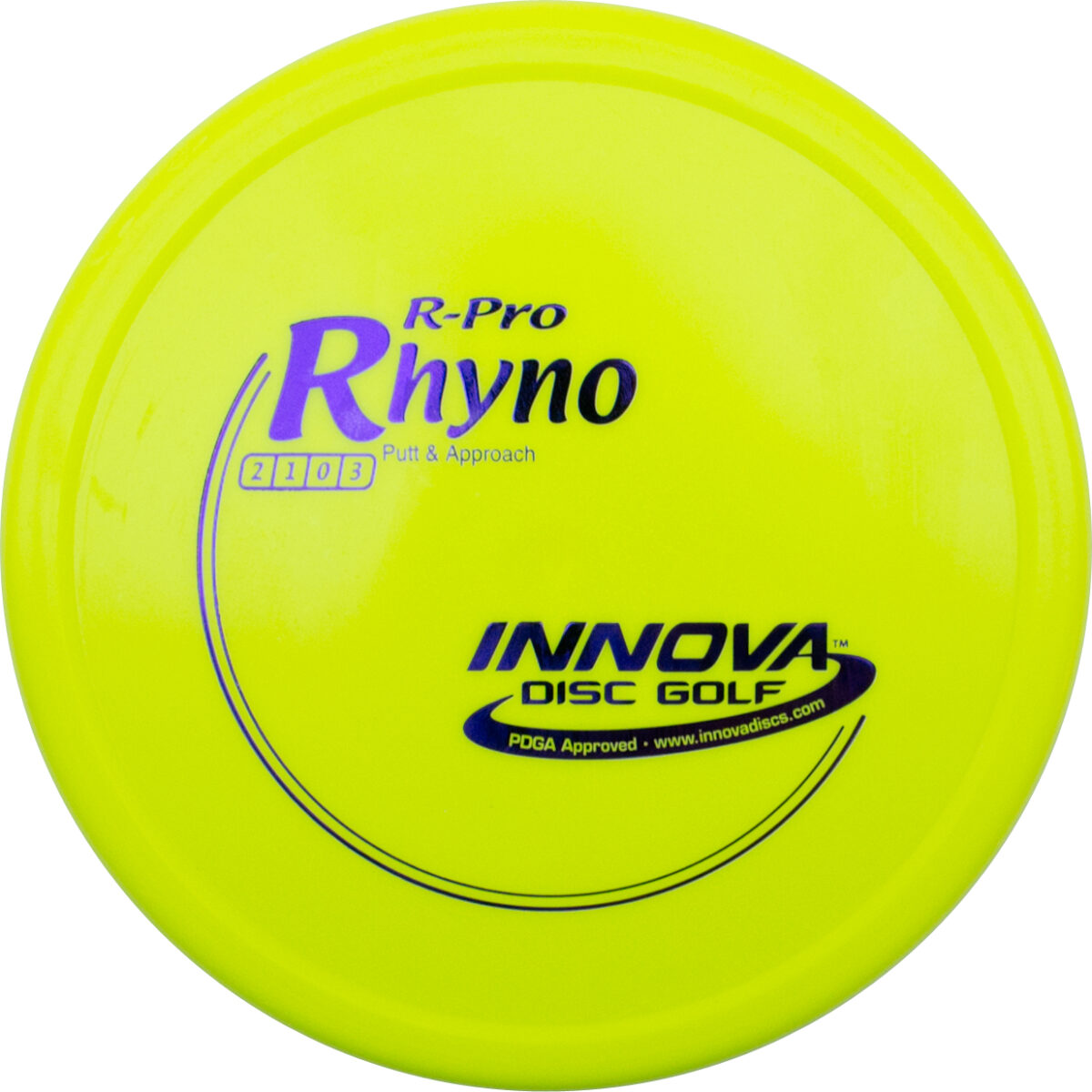
Low Glide: Rhyno (1 Glide). As you might imagine, a Rhyno, the slower cousin of the Pig disc, is unwilling to stay in the air for very long. As a putt and approach disc, it’s great for headwind play and control approach shots.
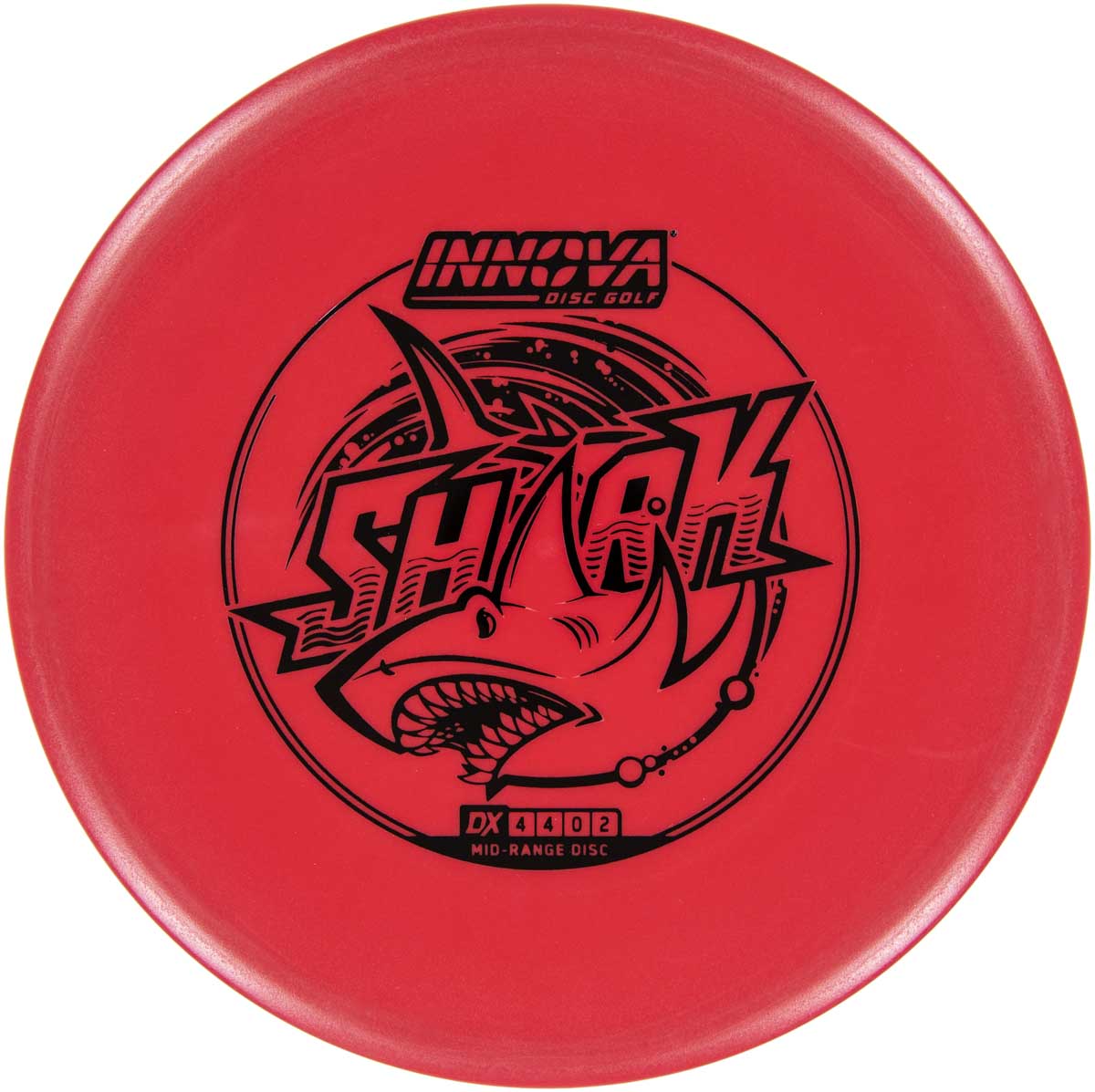
Medium Glide: Shark (4 Glide). With the exception of its Speed, which is on the slower end of the scale, the rest of the Shark’s flight numbers line up close to the middle including Glide. This gives the large diameter midrange a stable, manageable flight that’s perfect for creative shot design. **Used for the Innova Beginner Set.
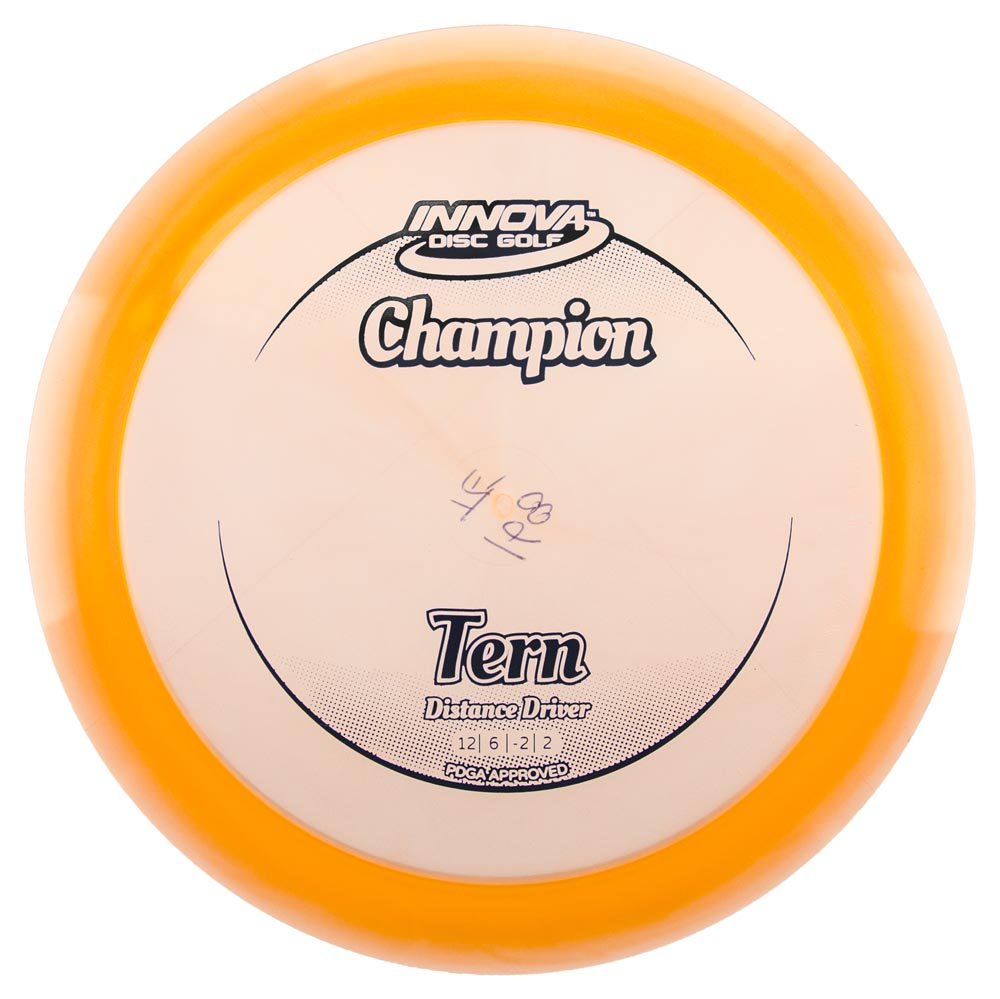
High Glide: Tern (6 Glide). When you’re ready for a speedier distance driver, the Tern is a fan favorite. Once you get it up to Speed, the Tern’s pumped-up Glide (among the highest for drivers) and substantial Turn work together to hang the disc in the air for an improbable amount of time.
The Turn Rating (The Third Number)
**Understanding a few terms like RHBH, understable, and overstable will come in handy for the next few sections. Click on Flight Terminology for a crash course on their explanations.
If Glide is the laid back, carefree flight number, then Turn is the wildcard. The Joker. The guest that can turn a ho-hum party into a real shindig. Remember when we talked about disc stability, particularly understable discs. Well, Turn is a major factor in what makes a disc understable.
To get definitive about it: Turn is the likelihood of a disc to drift or turnover to the right (when thrown RHBH – Right Hand Back Hand) during the midway point in flight or sooner. Turn flight ratings will range from +1 (very resistant to Turn) to -5 (extremely likely to turnover). Turn is the only rating where there can be a negative number.
“For me, the high speed Turn number tells you all you need to know about a disc. Speed and Fade are all relative to arm Speed and skill, but the Turn number tells all,” said 2-time World Champ Barry Schultz.
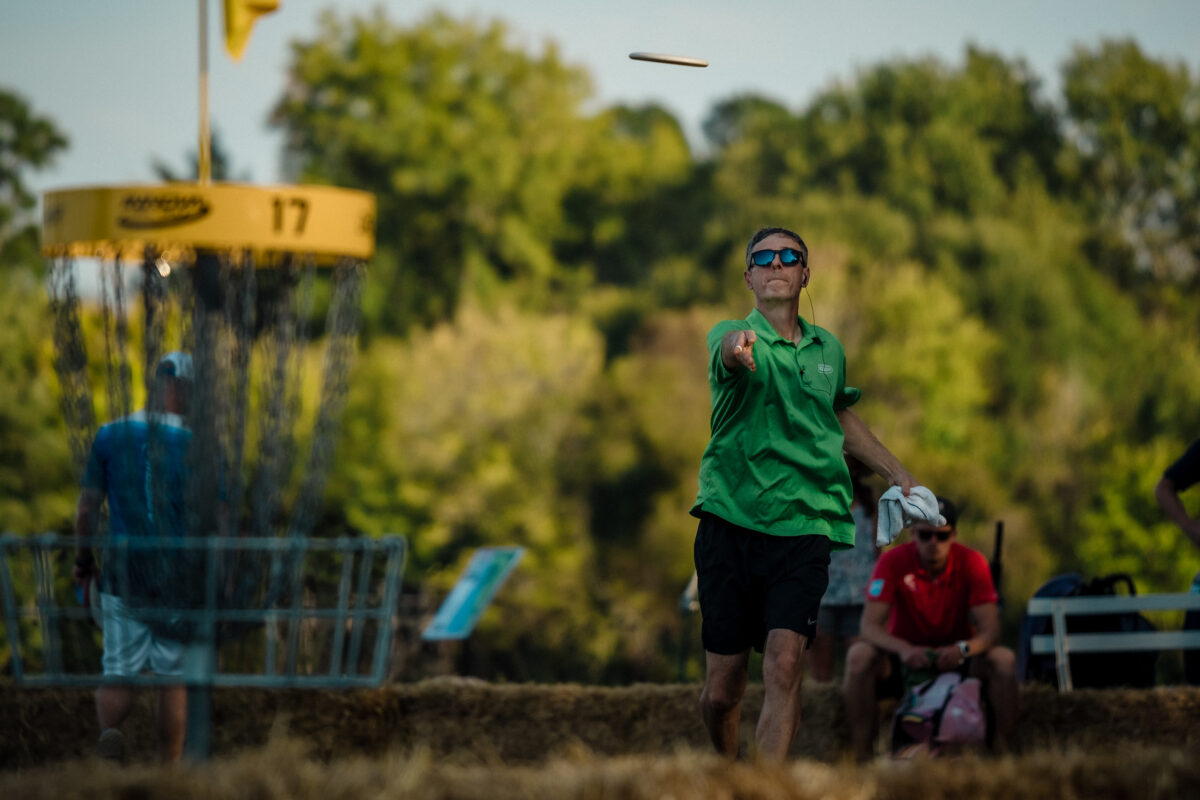
Turn, baby Turn! When you want maximum distance, you typically want the disc to have at least some Turn to achieve a disc’s full flight. There’s perhaps no better feeling in disc golf than throwing the perfect S-curve (or “helix” shape) that either flies super far or shapes through an ideal fairway gap. Turn can also give a disc a more forgiving flight – Round out the edges, so to speak.
***Beginner Tip*** Discs with higher Turn are easier for beginners to control and allow longer, straighter flights.
For experienced players, high Turn can prove difficult to control, much like skidding on ice – you’re going someplace, you just don’t know where. High Turn isn’t recommended for windy situations either.
Throws for understable discs
Hyzer Flip: This is a great shot to learn when you’re afraid a flat release might spray the disc too far to the right (RHBH). To do it, take an understable disc like a Leopard3 (Turn -2) or a beat-in stable or overstable disc (we’ll talk more about beat-in discs later) and throw it full power at a slight hyzer angle or hook. About halfway through the flight, when the disc reaches full speed, it will flip-up to flat for a period before eventually fading back to the ground. Hyzer flips are great for extending a straight drive or for hitting a narrow fairway.
Extreme Anhyzer: Sometimes you don’t want the disc to Fade back at all, flying left-to-right the entire flight (RHBH). An understable disc thrown flat or forced anhyzer will do this no questions asked. Just make sure you’re well acquainted with the disc or the shot could turn into a roller, which is our next understable shot.
Rollers: Often when a disc is thrown but prematurely hits the ground and starts rolling, it’s an embarrassing mistake that leads to several minutes of frustrated searching. But when practiced, an intentional roller can be very useful for getting out of trouble in the woods, for traversing very low ceiling shots, and for incredible distance out in open, relatively flat holes. Very understable discs like a Stingray (Turn -3) and Roadrunners (Turn -4) are popular for roller shots.
No Turn needed: Discs that do not have Turn are usually putters or discs that fall in the stable to overstable fairway driver or distance driver categories. These discs go without Turn to either keep that hold-the-line flight (putters and fairway drivers) or provide the maximum control for power backhand or forehand throwers (overstable drivers).
Here’s a sampling of discs w/ different Turn:
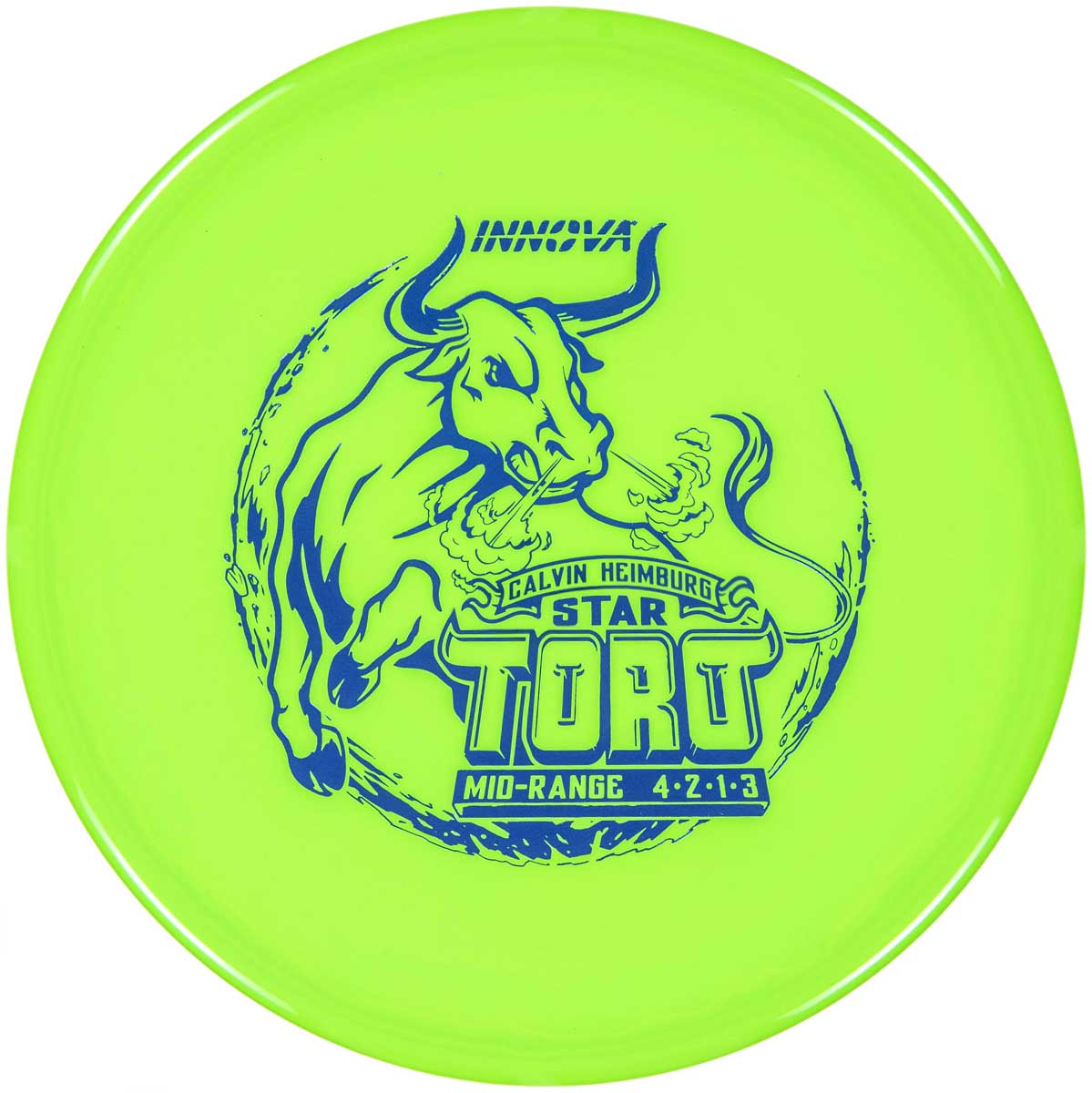
Resistant to Turn: Toro (+1 Turn). Very few discs have a positive Turn rating. In fact, of all of Innova’s current offerings, only the Toro does. This means the disc will do everything in its power not to turnover. It probably goes without saying, but this disc is meant for high power throwers.
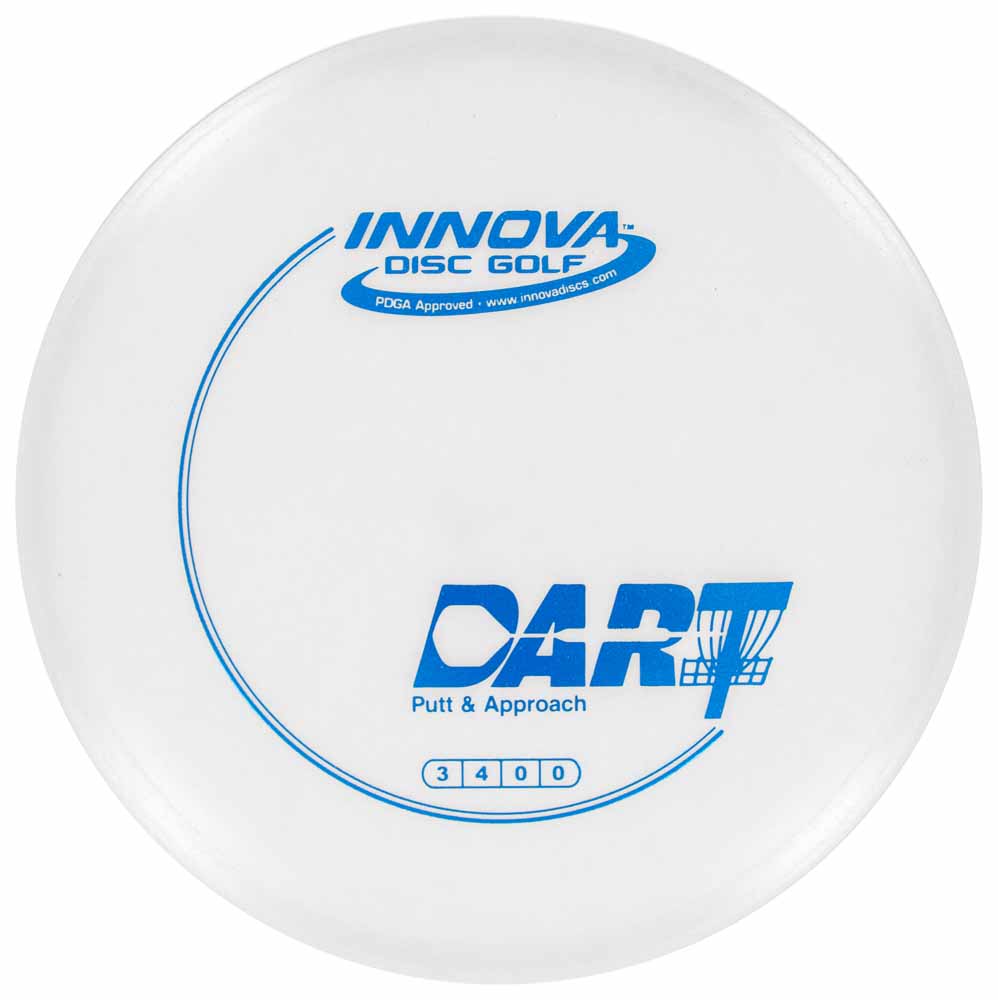
Low Turn Putter: Dart (0 Turn). 0 Turn is often found in putters. This helps maintain the direct flight to the basket. For simple, straight forward flights from point A to point B, no disc does it better than the Dart.
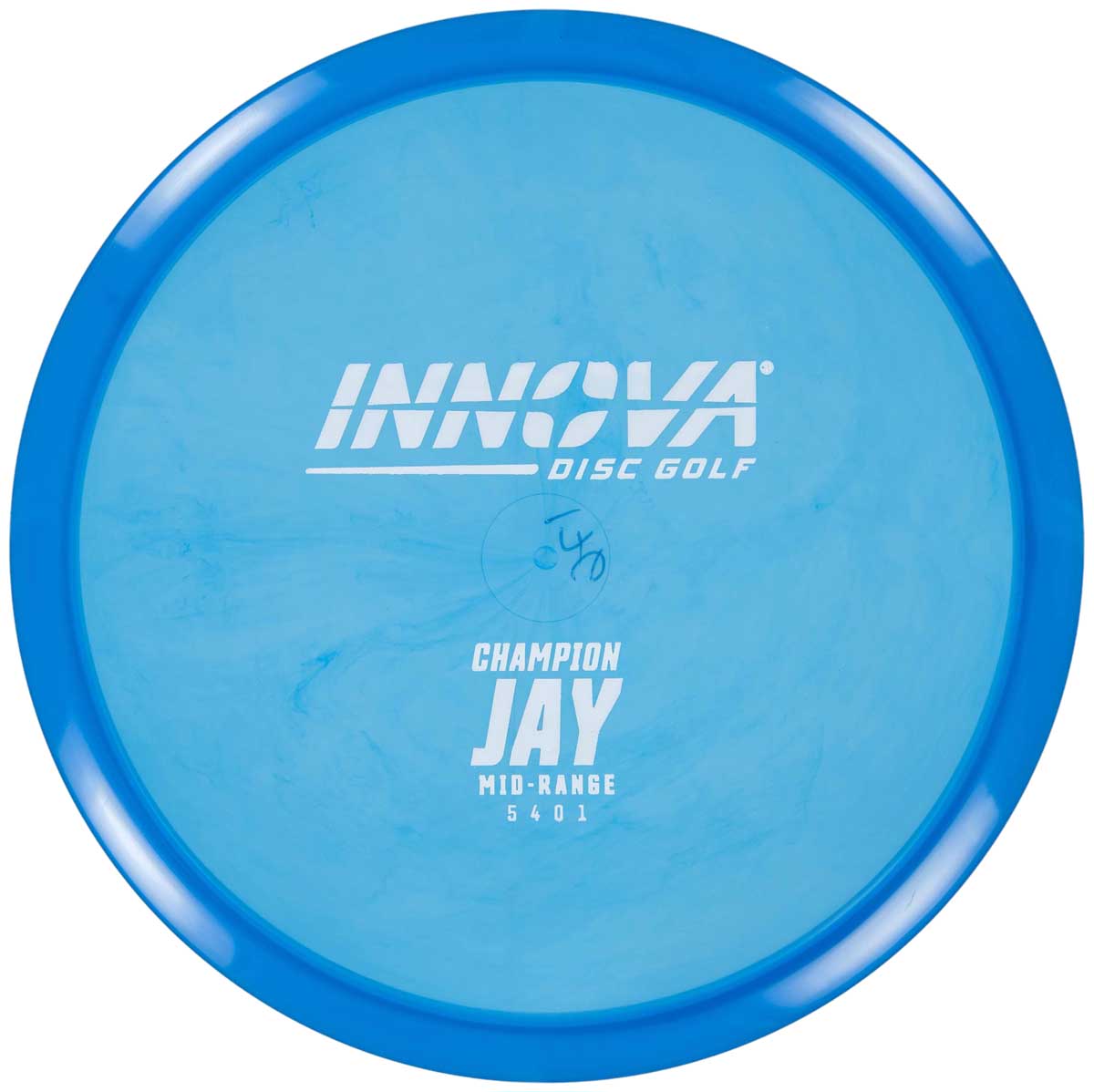
Low Turn Mid Range / Driver: Jay / Thunderbird (0 Turn). 0 Turn for stable to overstable discs allow it to maintain the line thrown or easily fade when designed to do so.
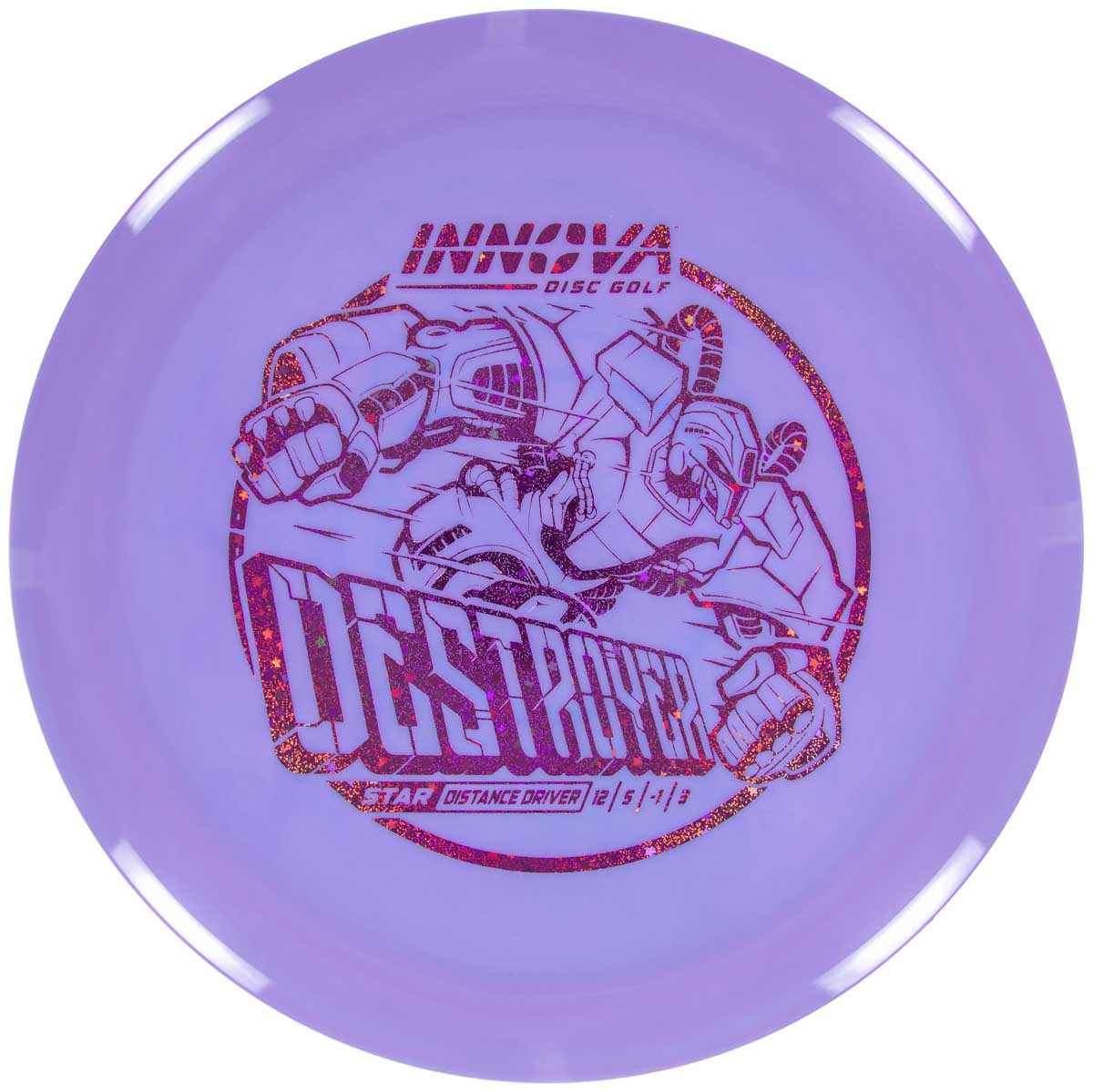
Medium Turn: Destroyer (-1). A modest to medium amount of Turn often balances out a stable or overstable disc to boost shot distance. Known for being quite overstable, the Destroyer’s -1 Turn helps create monster distance before its strong Fade takes over.
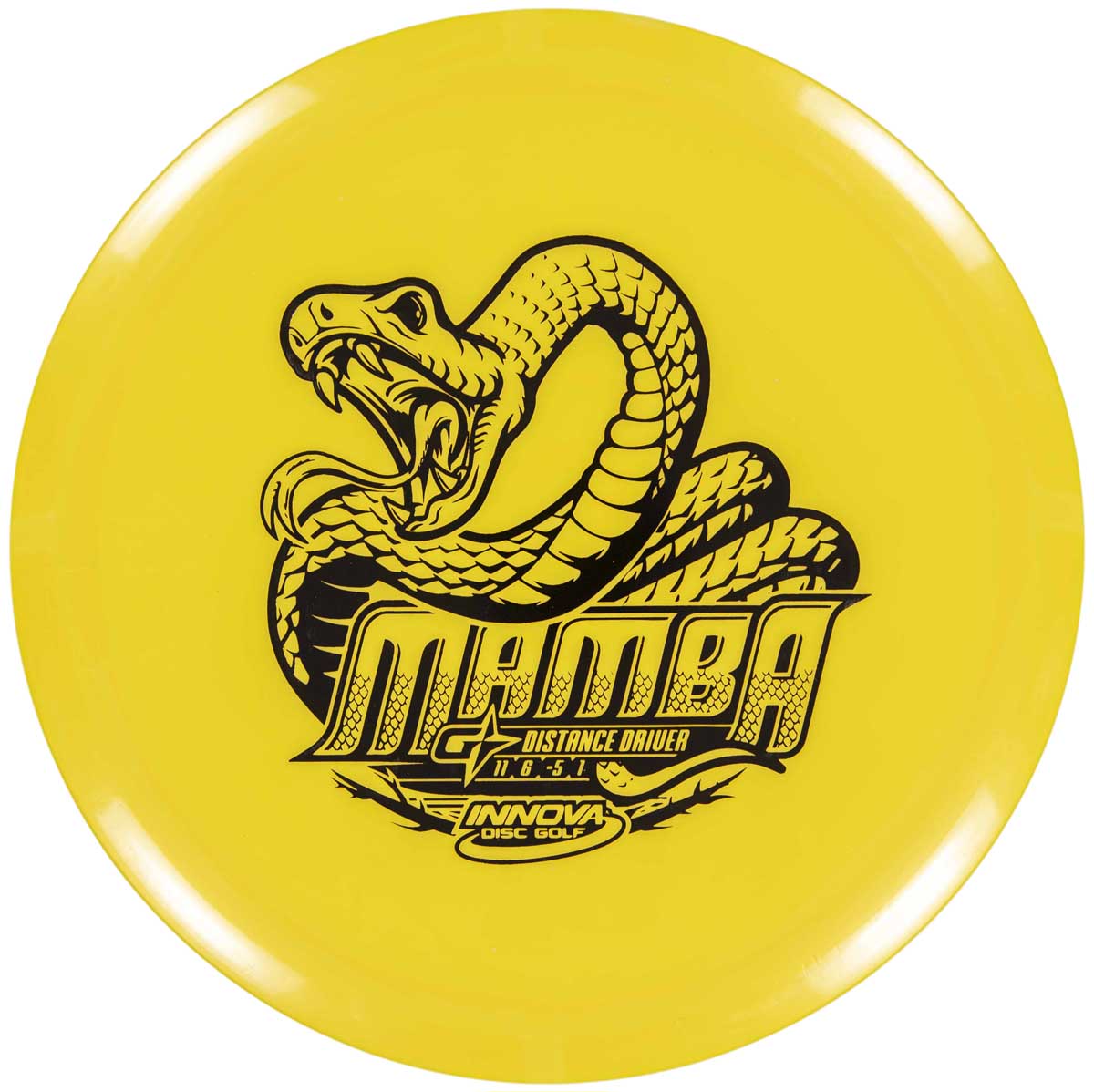
High Turn: Mamba (-5 Turn). When discs have as high of a Turn rating as a Mamba it’s hard to not make the disc turnover. Great for a beginner driver, effortless anhyzers for more experienced players, and as a first roller disc.
The Fade Rating (The Fourth Number)
Last, we come to Fade, the final curtain for a disc’s flight. Continuing with the personality metaphors, Fade is the responsible party. It keeps all the other flight numbers in check. Call it the designated driver you can always count on to bring you home.
If you want the official definition of Fade, it’s the degree a disc will hook or veer to the ground once it starts decelerating at the end of its flight.
The Fade rating can range from 0 (straightest finish) to 5 (extreme hook). Along with speed, Fade is the main factor determining how overstable a disc flies. Think back to our stability lesson early in this article. No matter how our RHBH player threw an overstable disc, it wanted to fight back to the left.
Fade’s not so scary: However, don’t let Fade and the overstable flight that’s normally tied to it, scare you. Fade is meant to help make your disc more dependable and finish as planned. Here’s a good example: say you throw a drive (RHBH) with trouble on the right. Your disc turns as expected towards the trouble, but instead of continuing to fly and later land in the no-no zone, the disc’s Fade kicks-in and settles the disc back into the fairway. This is how Fade, when done right, can work for you.
**For high power players, a high degree of Fade can help channel their power into controlled, accurate shots.
Overstable = Firebird. We can’t talk about Fade without mentioning The Innova Firebird, arguably the most famous overstable driver. Its relatively low Glide (for a driver), non existent Turn, and a beefy 4 Fade rating make it a favorite for control backhand and forehand shots from powerful players. 2017 US Champ Nate Sexton has made a career out of throwing the disc. “The hard Fade of the Firebird allows you to completely trust the disc in a variety of wind conditions, or if there is water in play. You can throw it hard and count on that predictable finish every single time,” said Sexton, who uses the disc for his sought after tour series.
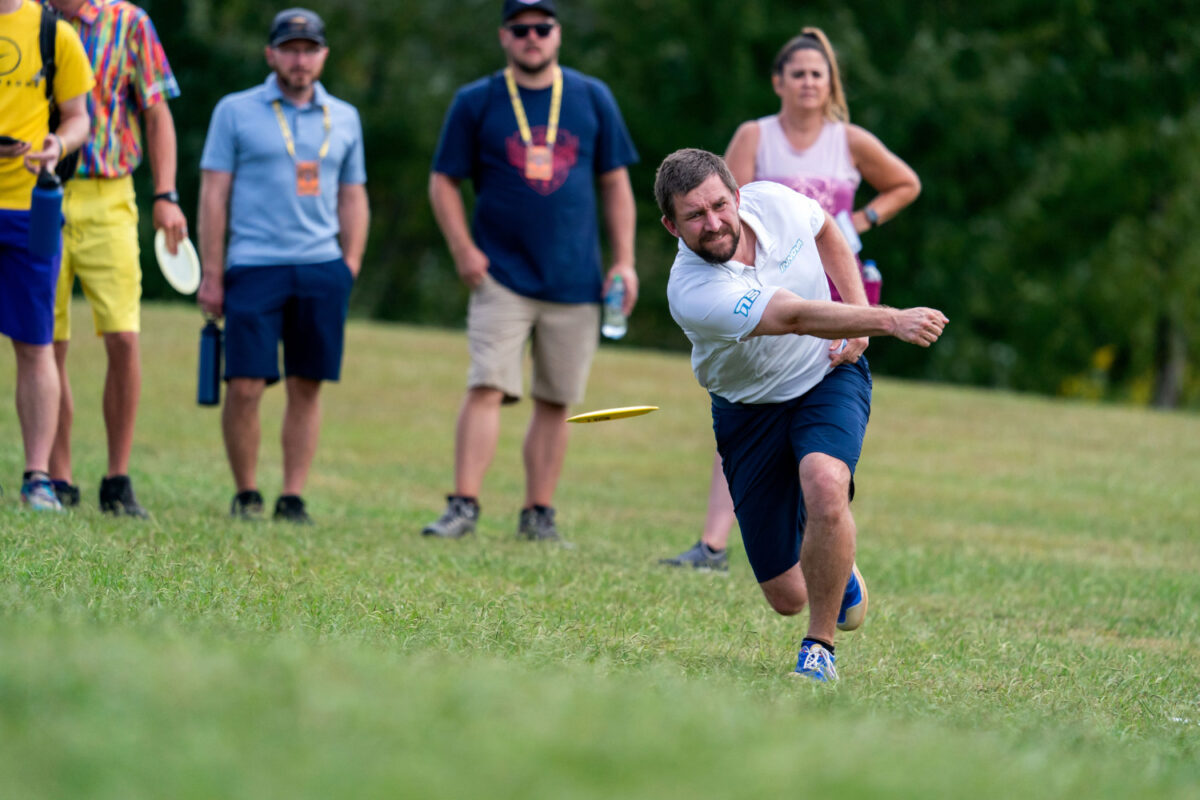
Find your inner Fade: For those with lower power or low arm Speed, lots of Fade can be near impossible to control, with drives veering left as soon as you let it go and leaving you questioning why you began this sport. That’s why it’s important to do your homework and find discs that have manageable Fade (even if it’s just a Fade of 1) for your skill and for what you intend to do with them.
Throws for overstable discs
Power Backhand and Forehand drives: If you have the arm Speed, meaty discs can provide ideal placement even in inclement weather.
Flex Shots: Get distance without sacrificing control through forced anhyzer shots using an overstable distance driver
Monster Hyzers: Just letting go of these discs with high Fade results in a hyzer or hook flight. Big arms can really do these justice.
Overhead Shots: Launching a hammer or thumber throw can utilize an overstable disc’s flight and still stay on point.
**High Fade discs are typically not used to achieve maximum distance.
Be Selective: If you don’t have the power to use discs with high Fade on a regular basis, then just use them for select situations like:
- Headwind drives and approaches
- Skip shots around a dog leg turn
**Try overstable discs in lighter weights and in more understable plastic like DX first.
Here’s a sampling of discs w/ different Fade:
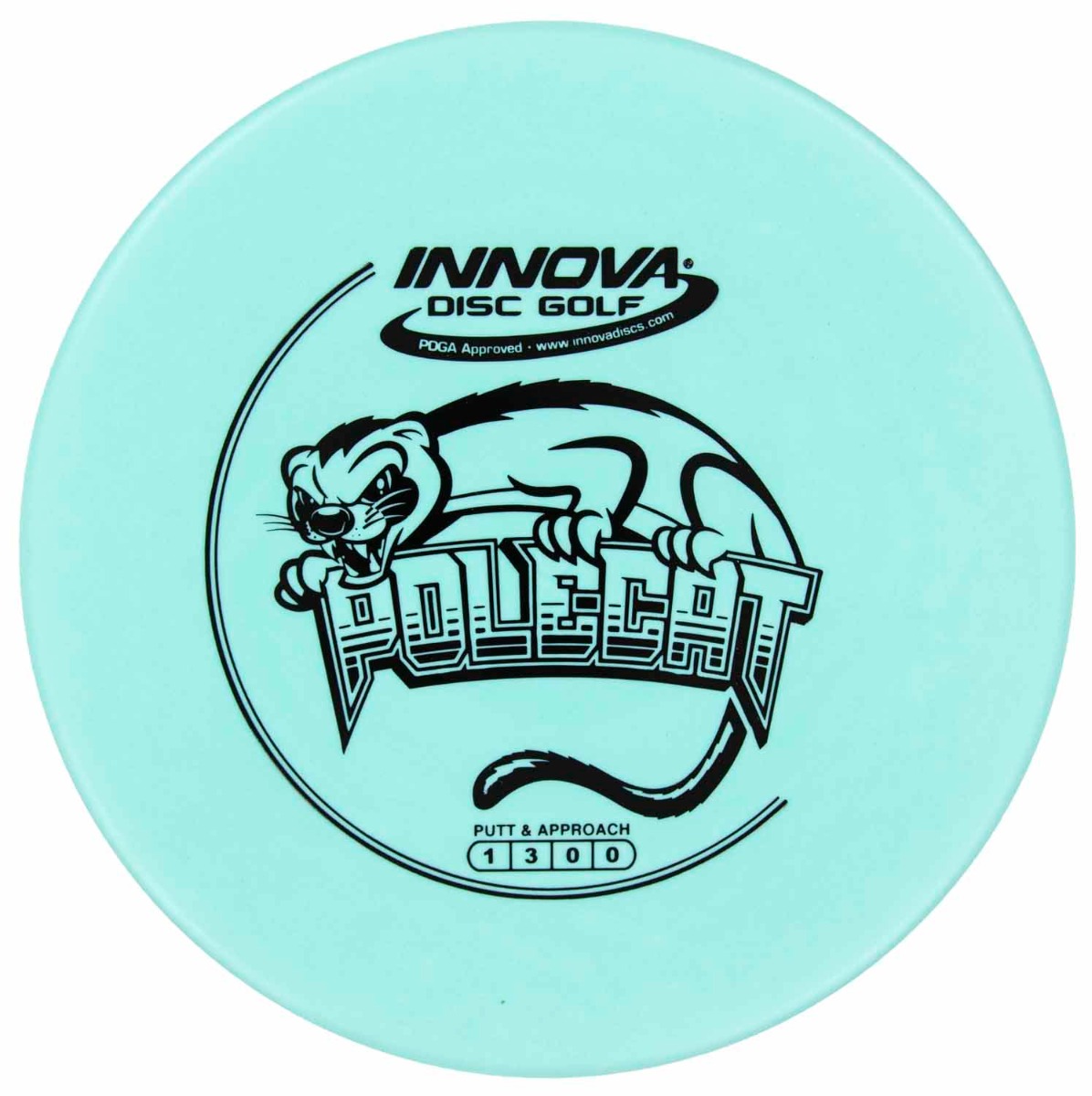
No Fade: Polecat (Fade 0). Every Innova driver has at least some fade. It’s when you get to stable to understable mid ranges and putters that you see discs with 0 Fade. Similar to catch discs, these discs are great at working with you to keep things in line.
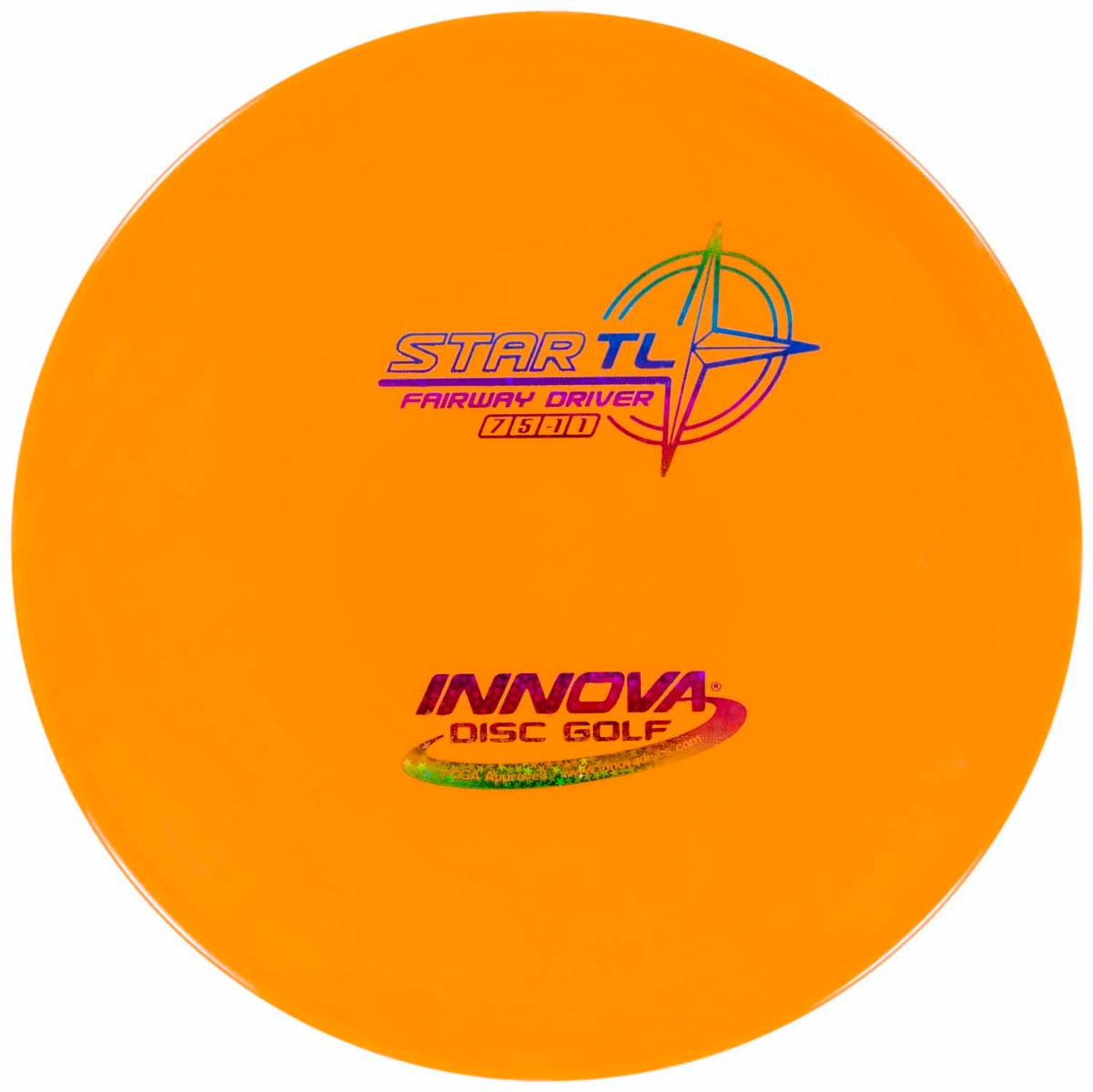
Low Fade: TL (Fade 1). A Fade of 1 keeps things from getting too squirrelly and provides understable discs or stable discs like the TL with a predictable finish at flight’s end.
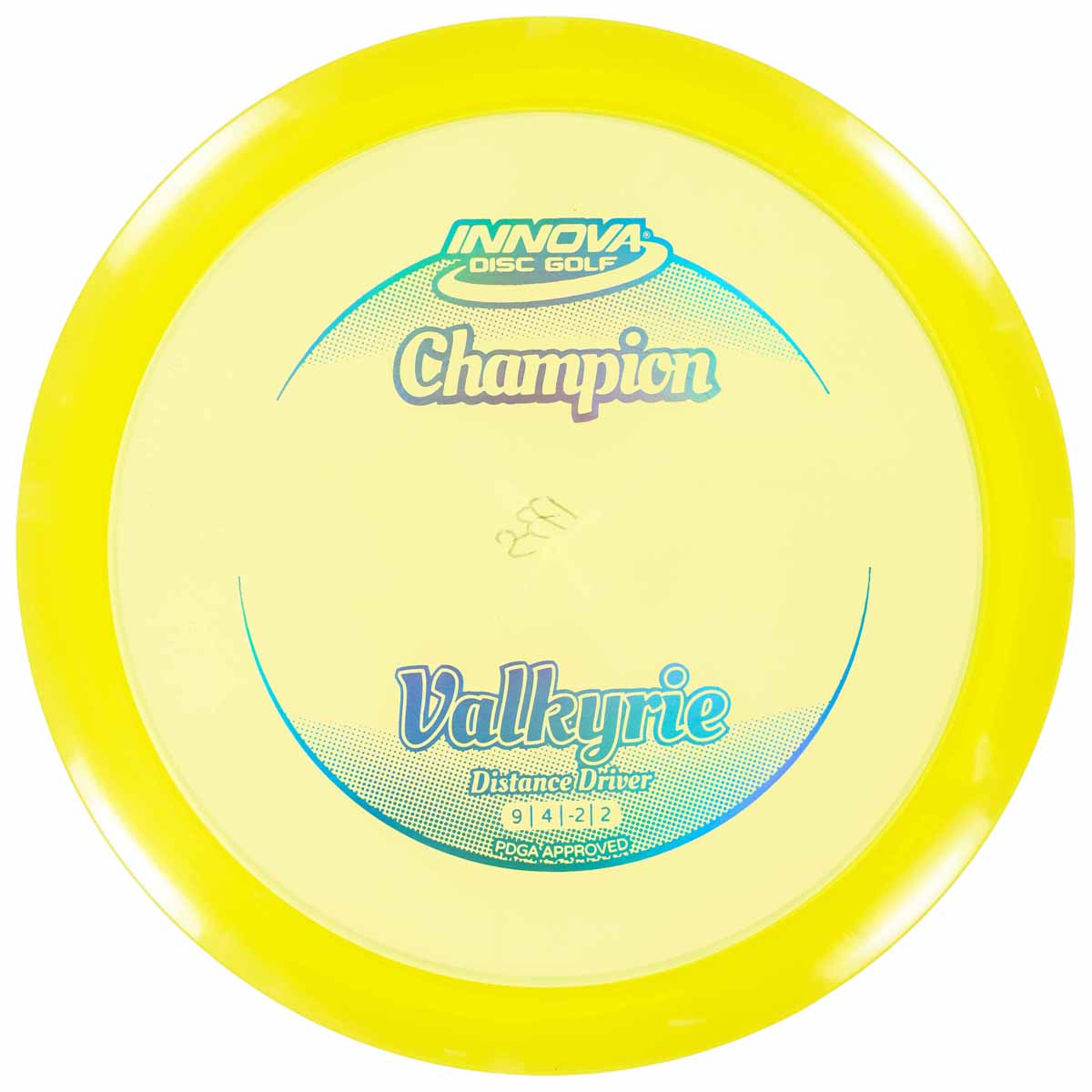
Medium Fade: Valkyrie (Fade 2). Be cautious, but don’t get scared off if a disc has a Fade of 2. Discs like the TeeBird or Valkyrie are classic, versatile flyers once you get the hang of them.
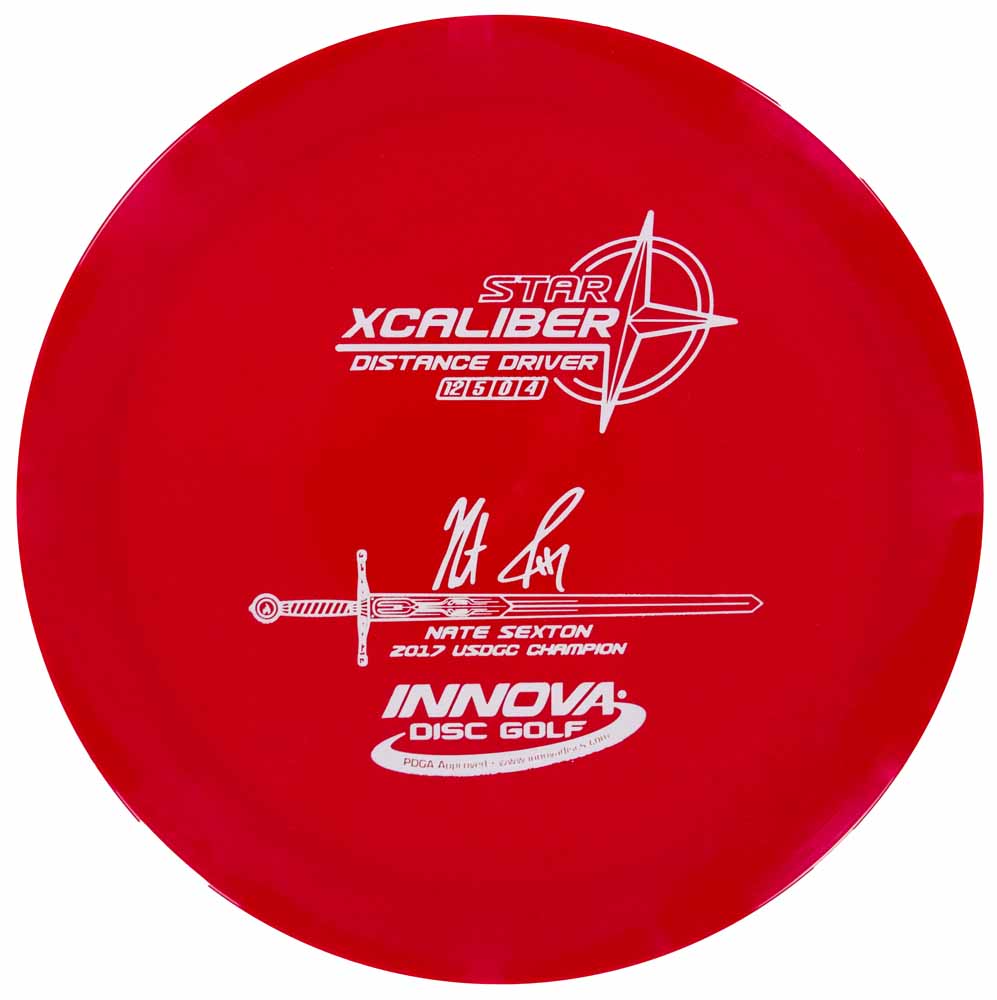
High Fade: XCaliber (Fade 4). You need to know what you’re getting into with discs like the XCaliber otherwise it will just gather dust on your disc shelf. Even experienced players need an adjustment period to these meaty drivers.
Flight Terminology
If you’re new to the game, here’s a super quick lesson on some disc golf terminology you really have to know to get an understanding of flight numbers. They’re in bold type, so they’ve got to be important!
RHBH
You might be thinking that RHBH stands for some arcane baseball abbreviation statistic. Not quite. It stands for Right Hand Back Hand – which is a backhand type of throw, performed with the right hand. It’s the throw most players start with and it’s the throw we’ll be referring to for this article. There are several throws in disc golf, so why do we limit our explanation to just one type of throw? For one, it’s just easier that way. Sorry lefties or forehand dominant players, no offense meant. However, whatever directions we mention for RHBH flight, just insert the opposite direction for lefty backhand and righty forehand. Lefty forehand shots fly the same as RHBH. So, we’re already good there.
Stable
Clear you head and picture a right handed player throwing a disc that flies straight for a long period before gravity takes over and it gently veers (or Fades) to the ground. This is referred to as a stable disc. No matter what angle you put the disc on: whether it’s flat, or you make the disc hook (hyzer), or you perform a slice (anhyzer), this disc is engineered to hold whatever line you put it on. **Think of these discs as a stable individual. Someone that’s unlikely to go to extremes. We like these people. They’re predictable and make good pie.
Understable
Now picture that same player trying to throw another straight shot, but this time about halfway through the flight, the disc slices (or Turns over) to the right for a period before it eventually Fades back left to the ground. This is an understable flight. It wants to Turn no matter how you throw it. Hook or hyzer shots will smooth out and become less severe. And slice shots or anhyzers will turn over and never fade back or immediately turn over and convert into a roller shot.
Overstable
Finally, think of our same player (I know. He or she is getting a little tired by now), attempting to throw a straight shot, but this time instead of the disc going straight for a long time, or turning over to the right, it veers (or Fades) hard to the left after an initial straight flight. This is an overstable flight. This disc is built to Fade. Hyzer shots will hook sooner and anhyzer shots will Fade back to the left sooner.
**Think of understable and overstable discs as unstable people. They can certainly draw a crowd, but they’re not always the most predictable. And, they’re pies taste a little funny.
Visual Aide! Stability: The flight pattern of three mid range discs (Roc3, Mako3, and Wombat3) will help illustrate stability nicely. First, look at the flight path of the Mako3 (yellow) thrown RHBH. See how it barely diverts from that straight line. It flies fairly stable. It holds the line. In green, the Wombat3 noticeably turns over to the right, a sign of an understable flight. And the Roc3 (red) starts out straight, but fades hard before flight’s end, marking an overstable disc.
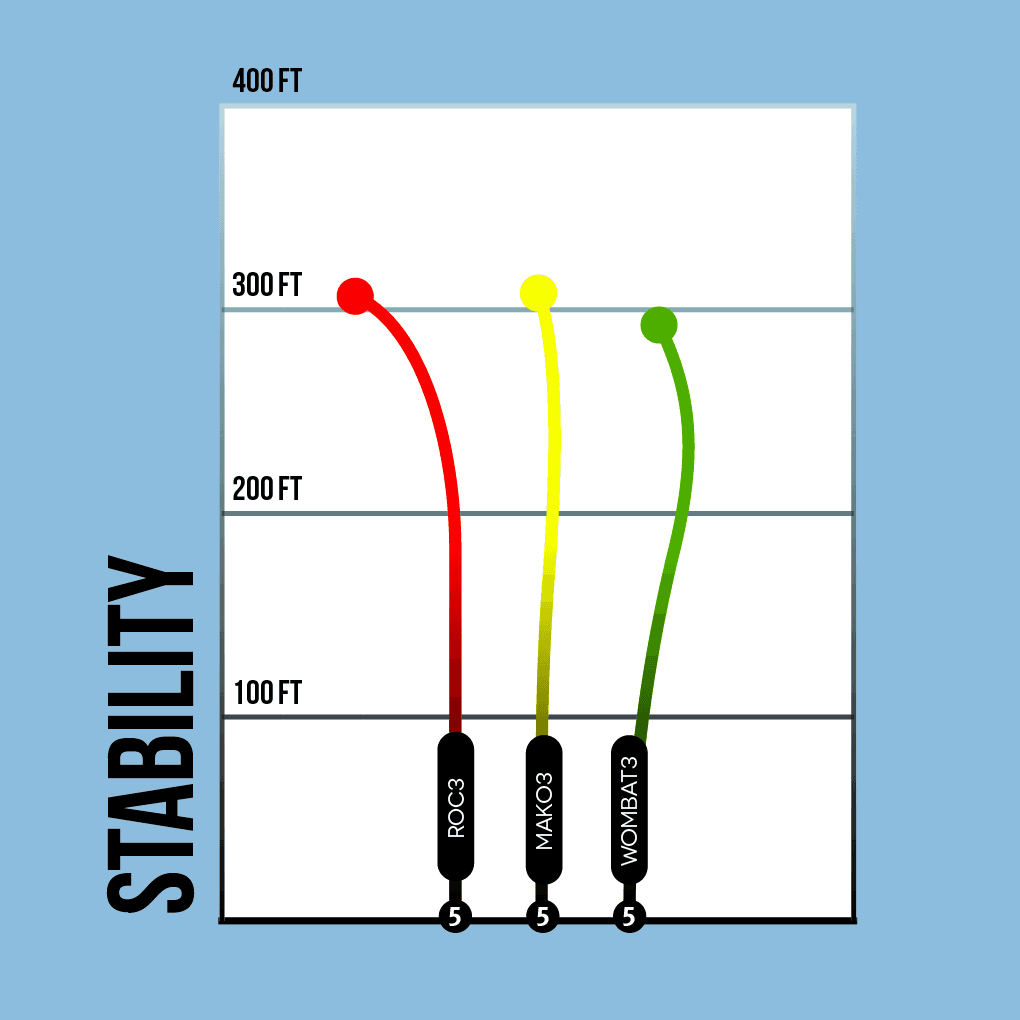
Flight Numbers History & Other Background Info
History
Why were the flight ratings created? By 2008 Innova had more than 50 disc models to its name and more on the way. That’s a lot of plastic to keep track of, even for the man that invented them. So to help players out (and everyone at Innova as well), Dave Dunipace came up with the unique four-part system that allows disc golfers to preview a disc’s flight and compare them to each other. Decades later, Dunipace’s flight rating system has become integral to the sport.
How does Innova determine what flight ratings a new disc gets? When Innova is developing a new disc, its flight ratings are finalized through a series of tests based on existing discs’ ratings, field testing alongside other discs, and other factors. “Any time we are throwing discs, we are observing characteristics. We have many people throwing and giving feedback … We also test for other characteristics such as ability to range and torque resistance …” said Dunipace. (**The more torque resistance, the longer the disc will spin.)
Flight Charts
Sometimes it’s hard to visualize discs and their flight numbers. It helps to have something to refer to. That’s why we suggest you purchase a set of Innova Disc Golf Flight Charts. It nicely organizes all Innova discs currently in production by speed and by stability. Plus, plastic types, too. It’s like chemistry’s periodic table, but more useful.
The four flight numbers combined with the visual arrangement of the flight charts, give players a good “estimation of disc performance,” said Dunipace. Put them on your wall at home or at the office. They’ll come in super handy the next time you’re in the market for a disc. After referring to them several times, you’ll be able to visualize the disc arrangement in your head – which is practically a super power in the disc golf community.
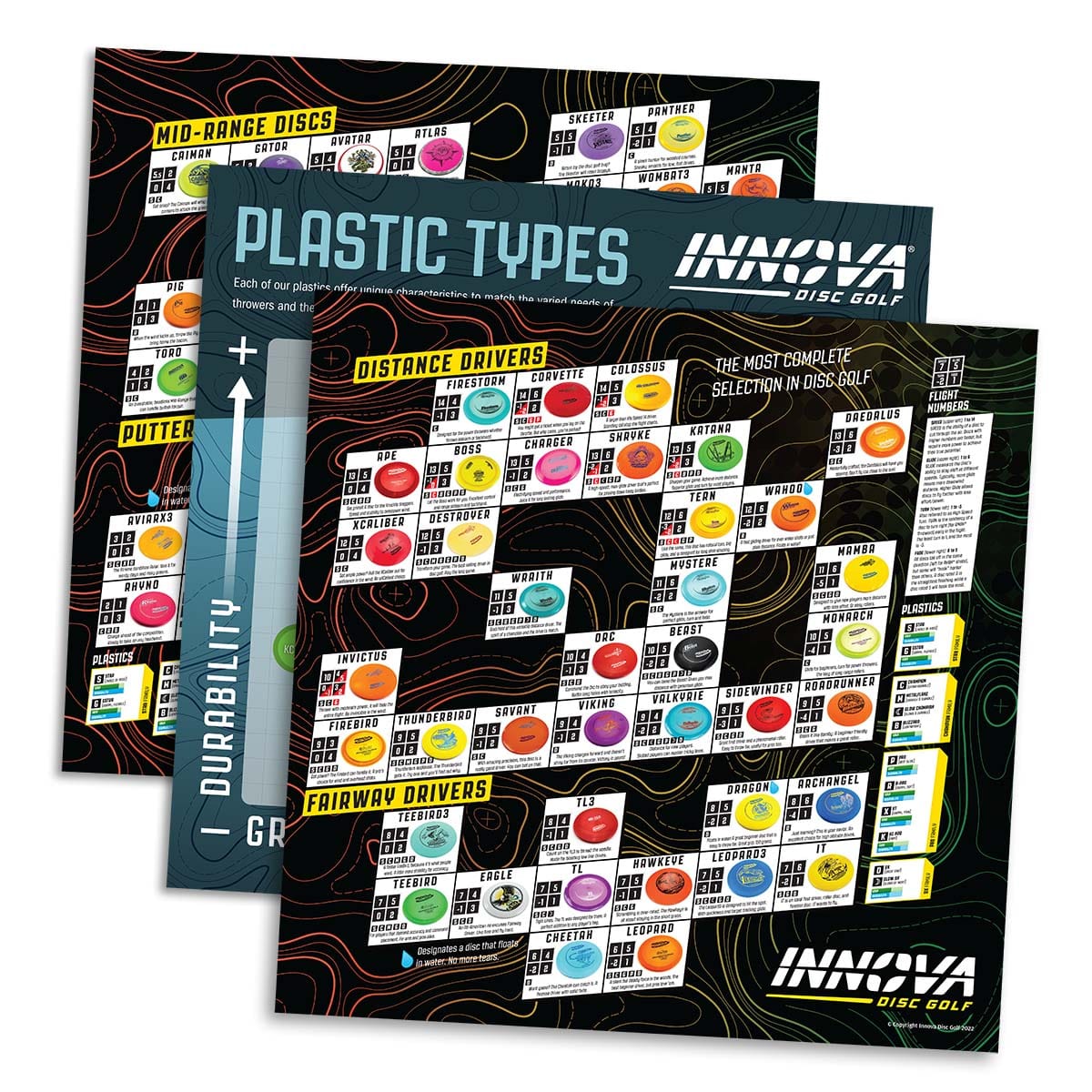
Adoption of the System: Apples to Pears
Most disc manufacturers have adopted Dunipace’s flight ratings system. And to a basic extent it can be used to compare discs across manufacturing lines. But only to a very basic extent. Don’t try to do an in-depth analysis of discs from different manufacturers because it won’t be accurate. Why? Because different disc manufacturers have different production processes and interpretations of the flight ratings. It’s not apples to apples. It’s more like apples to pears, which is great for a fruit salad, but not great when you want an accurate disc comparison.
Same Speed Comparisons / Word of Caution
When you do compare Innova discs, only compare the Glide, Turn, and Fade of discs of the same Speed. For example, the Valkyrie is a Speed 8 disc. That means you can compare its Glide, Turn, and Fade with other 8 Speed Innova discs, but not with discs of other Speed. Here’s what Innova’s disc inventor Dave Dunipace says about that: “The operating Speed of discs determine the Turn, Fade, and Glide. That is why those factors can only be compared in each Speed level.”
**Flight numbers aren’t perfect. The ratings give you a starting point for selecting discs that will achieve certain flight paths. Everyone throws differently. So, use these as a tool and experiment.
Other Factors That Affect Flight
So we talked about flight numbers. We even gave them cute personalities. But there are of course other things that weigh on a disc’s flight (including weight). Here are some of the more important ones to consider when evaluating discs:
Plastic Type
It’s a known fact that some plastic types are more overstable than others. In terms of stability for Innova’s stock plastic (widely available), Champion is the most overstable followed by Halo Star, Star, GStar, XT, Pro, and finally DX. Take the Wraith, for example. Say you have one in Champion and one in DX plastic, both in the same weight. You’ll find out pretty quick that the Champion Wraith flies more overstable, as if it has an extra degree of Fade.
Some Innova discs actually do have different flight numbers for different plastics. This happens occasionally with high Speed drivers. For example, the Turn rating of the Corvette is one degree higher in GStar and Pro than other plastics offered. While, the Shryke has a Turn rating one degree lower in Champion plastic than other plastics. According to Dunipace, the Speed portion is much easier to determine than the other ratings. This explains why ratings like Turn occasionally get adjusted like this after a disc is released.
**Different production runs of the same disc may offer subtle flight differences, as well.
Weight
Weight also plays a big role in flight and usability. The heavier the disc, the more overstable it is. That’s why you’ll see advanced players always reaching for max weight Firebirds and Destroyers so they have maximum overstability. Here’s a beach related example that brings home this point. To make the Innova Pulsar, an Ultimate style catch disc, more overstable and more resistant to the heavy winds that frequent the beach, Innova essentially added 25 grams to it. And thus, the vacation favorite known as the Kahuna was born.
Max weight in disc golf is often overhyped and players routinely get stuck thinking it’s the only choice. Let’s face it, only a small fraction of casual players can throw a 175-gram Destroyer correctly. And chances are high you’re not one of them. But don’t feel bad. Just get past the max weight mentality and choose plastic in a lighter weight. Your game will thank you for it.
Plastic Condition (Beat-in)
Call it a law. Call it the nature of things. Call it a fact of life. Whatever you want to call it, as discs are used or broken-in they become more understable. Premium plastics like Champion, Halo Star, Star, and GStar will do so much more gradually and therefore retain their original flight characteristics longer. DX, XT, R-Pro, KC Pro, beats in faster. A Star Destroyer is more overstable than a DX Destroyer when both are new. However, if a Star Destroyer is well worn from several years of use, a new DX Destroyer would likely be more overstable.
Players that have a preference for a certain disc, say a Star Destroyer, often carry several in their bag, each broken-in to a varying degree and each flying slightly different. An experienced player will have a situation in mind for each of those variations.
Spin
Everyone will tell you spin equals more distance. And they’re correct. Without applying maximum spin, your drives peter-out to the ground prematurely. Generating more spin is pretty simple. Grip the hell out of the disc prior to release. All of that pressure will translate into more disc spin.
Off Axis Torque
Ever seen a disc wobble soon after being thrown? It’s called off axis torque and it’s not good. Players that do this, unintentionally alter their intended disc angle prior to release, which causes the disc wobble (become more understable) and turnover too soon. Remedy this during field practice by focusing on your desired release angle throughout the throw.
**Nose angle (the leading edge of a disc when it’s released) also plays a significant role in flight. To achieve your disc’s full potential, it’s best to throw with the disc’s nose pointed down. Otherwise, the disc flies more overstable than intended.
Thrower’s Skill / Power
Did you know that the Flight Ratings are developed with a certain skill / power in mind? It’s true. Generally, they are most applicable to an advanced level player capable of throwing a 350-foot drive, says Dunipace.
However, just because you don’t have a big, fast arm doesn’t mean the flight numbers can’t apply to you. Dial down the overstability of the disc by choosing lighter weights and a more understable plastic. This will allow you to throw the disc faster and still enjoy the disc’s flight characteristics that you’re after. A DX Wraith in 157-gram plastic essentially has the same flight numbers for a person with low power as a max weight Champion Wraith for someone with high power.
Mother Nature
We’re sure you’ve realized by now that wind can alter flights. Headwinds make a disc more understable while tailwinds do the opposite. Sudden drop in elevation tends to make a disc fly more understable while uphill climbs do the opposite. Playing in higher altitudes like Colorado tend to make discs fly more overstable as well. Playing near the water tends to cause players to lose more discs … (hehe, just seeing if you’re still paying attention).
How to Use the Disc Golf Flight Numbers
We’ve talked about this throughout the article, but let’s cut right to the chase here. In general, flight numbers paired with the Innova Flight Charts can do two main things:
- Preview how a certain disc flies
- Steer you toward a disc with a certain flight.
When it comes to describing how a disc flies, flight numbers can reveal if the disc is …
- Understable: Understable discs usually have higher Glide and Turn ratings. These discs are usually on the right side of the flight chart.
- Overstable: Overstable drivers typically have higher Speed and Fade Ratings and lower Glide. Overstable mid ranges and putt and approach discs have slower Speed, but have higher Fade and lower Glide numbers. These discs are usually on the left side of the flight chart.
- Stable discs: Stable drivers typically have medium Speed, Turn, and Fade ratings. Stable putt and approach disc and Midranges have slower Speed, but have medium Turn and Fade ratings. These discs are generally located in the center of the flight chart.
- Beginner Friendly: The best beginner discs have a slower Speed rating, high Glide, high Turn and low fade.
Conclusion: Finish Strong!
Start with the Mako3: With more than 80 Innova disc models to choose from, it’s not uncommon for new players to get a little overwhelmed at first. So, if you’re unsure of where to begin, start with 1 disc, the Mako3 (We got this idea from Innova’s social media and thought that it was worth passing along.) The Mako3 is a stable, neutral flying mid range and will act as your comparison/default point. If you overpower it and make it turnover, try it in a more overstable plastic and heavier weight. Still turning it over? Time for a more overstable midrange like a Roc3. However, if a Mako3 is fading too much for you. Try it in a more understable plastic like DX and a lighter weight. Still too much? Go for a more understable model like a Stingray. Once you’ve zeroed-in on a midrange disc, you can do the same thing for drivers.
You don’t have to use Flight Ratings. Many veteran players like Barry Schultz and Juliana Korver started their careers without them and still became incredible players. And, honestly, the flight numbers can only tell part of the story. A lot depends on your abilities. But, the more you learn about flight ratings and flight numbers, the better you’ll be at knowing which discs do and don’t work for you and why that is. You may even save some time and money. Of course, you could just buy a big pile of discs and see which ones fly best for you. If you can afford to do that, go for it. But in the meantime, learn the flight ratings.
Personalized Disc Recommendations
Just answer a few questions and we’ll send you personalized recommendations within 24 hours.
GET PRO TIPS
